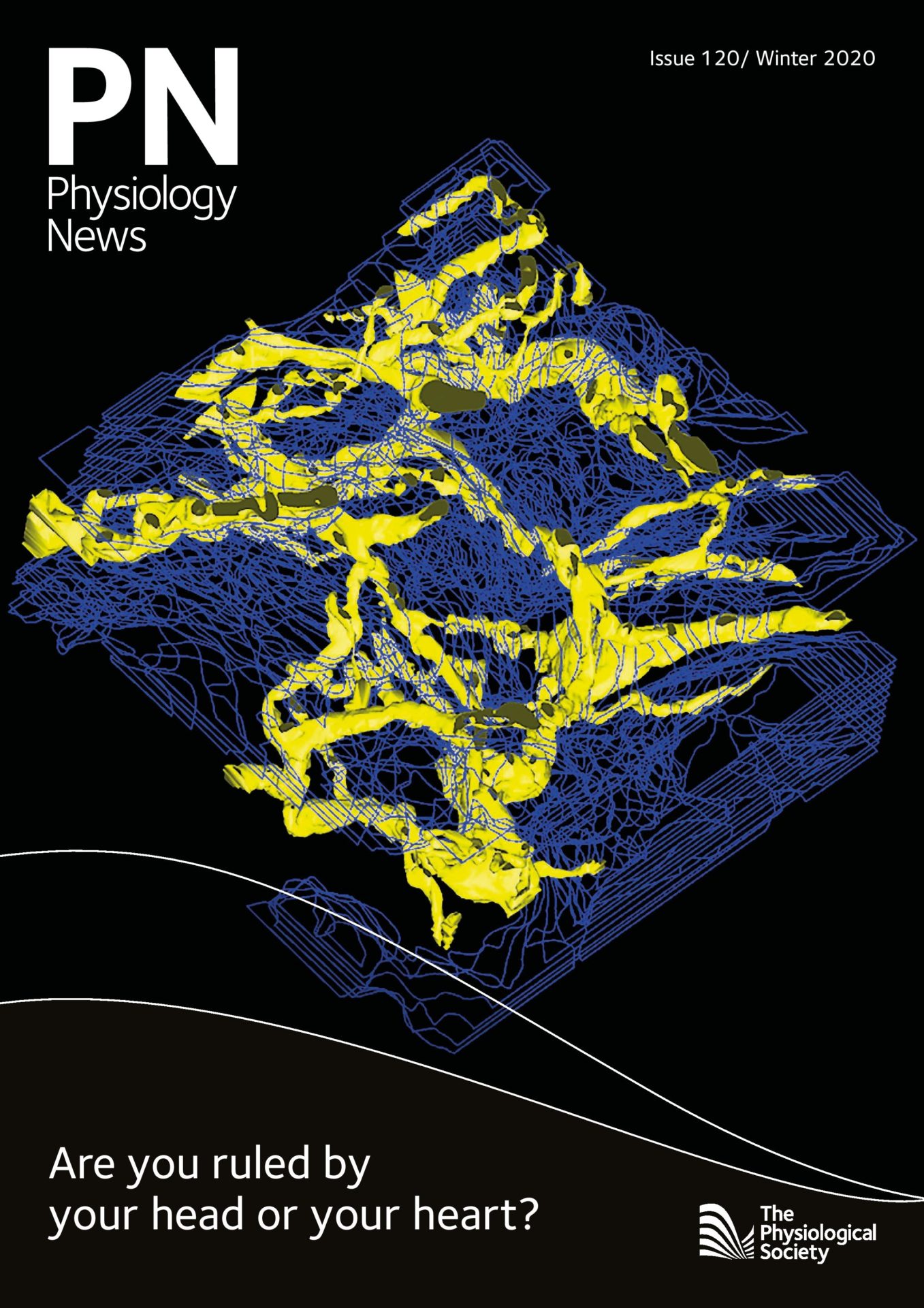
Physiology News Magazine
Obituary: Geoffrey Burnstock (1929 – 2020)
Membership
Obituary: Geoffrey Burnstock (1929 – 2020)
Membership
Alan North, University of Manchester, UK
https://doi.org/10.36866/pn.120.35

Geoffrey Burnstock discovered that adenosine 5’-triphophate (ATP) is released from cells and functions as a chemical transmitter. Geoff died in Melbourne, on 3 June 2020, aged 91.
Geoff hailed from a working-class background in East London. He lived through the Blitz, studied at Greenford County Grammar school, and after national service enrolled at Kings Technical College to get more A levels. His BSc was from King’s College London in 1953, where he began in theology and switched to zoology.
For his PhD [in JZ Young’s department at University College London (UCL)], Geoff developed a novel method for observing intestinal movements of freely moving brown trout.1 As a postdoc, first with Wilhelm Feldberg at Mill Hill and then in Edith Bülbring’s group at Oxford, he and Ralf Straub developed the sucrose-gap method to record the membrane potential of smooth muscle: this early work was mostly published in The Journal of Physiology.
At Oxford, he met and worked with visitors from Melbourne, Mollie Holman and Mike Rand. Geoff was taken by the informality and irreverence of the Aussie approach to science when compared to the stuffiness of the British and particularly Oxbridge “establishment”. He also married Nomi Hirschfeld at this time, whose family was from New Zealand. In 1959 he accepted a position as Senior Lecturer in the Department of Zoology of the University of Melbourne.
In 1960, Burnstock and Holman first recorded excitatory postsynaptic potentials in the vas deferens, and they concluded that these were not mediated by the sympathetic transmitter noradrenaline.2 Within a few years, Burnstock proposed that ATP was the extracellular transmitter. He later used selective desensitisation to show conclusively that the excitatory neurotransmitter in the vas deferens was ATP, as well as in the bladder and certain blood vessels.
Six years later, with Max Bennett and Mollie Holman, Burnstock reported that inhibitory chemical transmission from parasympathetic (now termed enteric) nerves within the wall of the intestine was also unaffected by substances known to block cholinergic and adrenergic junctions (non-adrenergic, non- cholinergic or NANC transmission).3 In 1970 Burnstock proposed that ATP was also this inhibitory transmitter.
His experiments soon resulted in the extension of the hypothesis to many other tissues, and in 1972 he introduced the notion of “purinergic nerves”, meaning nerves that release ATP to do “the work” of transmission. By 1985, Burnstock had distinguished between cell surface receptors for adenosine (P1 receptors; now they are termed A1, A2A, A2B and A3 receptors) and receptors for ATP (P2 receptors). Good antagonists were not available, and Burnstock used the classical criteria of rank order of agonist potency and selective desensitisation, to distinguish P2X and P2Y receptors.
There was great dubiety throughout this period that ATP could serve as a transmitter between cells, given the many roles in intracellular energy metabolism and phosphorylation that were being worked out for it within the cell. Geoff weathered this scepticism, even the ridicule, with a thick skin and a broad smile. When he returned to the UK in 1975 to become JZ Young’s successor as head of UCL’s Department of Anatomy and Embryology there were more than a few feathers ruffled by his Antipodean approach to research – “don’t just think about it, do it”.
It was fitting indeed that Burnstock and Holman’s 1960 paper led to the use of RNA from the vas deferens to isolate and express the first P2X receptor cDNA. This unequivocal demonstration that P2X receptors were indeed ion channels activated by extracellular ATP scattered the doubters to far winds.
Prompted by Burnstock, John Wood at UCL soon thereafter cloned a P2X3 receptor cDNA, finding that it was an ATP-gated ion channel expressed only by a subset of sensory neurons.4 It has since become clear that ATP, released from primary sensory cells, can act as an afferent transmitter to activate P2X receptors on sensory nerves: examples are found in the chemoreceptors of the carotid body, in some taste buds, and in the bladder urothelium. Advised by Burnstock, Rocheand later Afferent Pharmaceuticals (acquired later by Merck) developed a selective P2X3 receptor antagonist that is now in clinical use for idiopathic chronic cough (gefapixant).
On the P2Y side, Burnstock collaborated with Eric Barnard (who had been with him as a PhD student at UCL) and others to clone the first metabotropic P2Y receptor, showing that it was a G-protein coupled receptor.5 His discovery of 30 years before on the inhibition of intestinal smooth muscle is now seen to involve activation of the P2Y1 receptor. Gus Born had shown in the 1960s that ATP (and ADP) were potent inhibitors of platelet aggregation: this turns out to involve the P2Y12 receptor. Blockade of this receptor by clopidogrel, marketed since 1997, now saves thousands of lives each year.
Burnstock’s oeuvre is profuse and encyclopaedic of colleagues and collaborators. He was both champion and cheerleader, inspiring generations of others to embrace and pursue purinergic signalling. He founded professional societies and journals devoted to the study of purinergic transmission. His widespread recognition includes the Outstanding Contribution award of the British Neuroscience Association, election to the national scientific academies of Australia and the United Kingdom, the Royal Medal of the Royal Society, the Copernicus Medal, the Erasmus Medal of Academia Europeae, and Honorary doctorates from Frankfurt and Leipzig.
In 1929, ATP was discovered (by Cyrus Fiske and Yellapragrada Subbarow, and by Karl Lohmann) and the first effects of extracellular purines were reported when Szent-Györgyi described the action of adenosine on the mammalian heart. Geoff Burnstock was born that year. His long life married geniality with defiance, wisdom with plain-speaking. His legacy is an entire subfield of physiology that continues to thrive and intrigue.
References
- Burnstock G (1957). A ‘window’ technique for observing fish viscera in vivo. Nature 180, 1491-1492.
- Burnstock G (1960). Autonomic nerve-smooth muscle Nature 187, 951-952.
- Bennett M et al. (1966). Transmission from intramural inhibitory nerves to the smooth muscle of the guinea-pig taenia coli. The Journal of Physiology 182, 541-558.
- Chen C-C et al. (1995). A subset of sensory neurons express a novel P2X receptor. Nature 377, 428-431.
- Webb TE et al. (1993). Cloning and functional expression of a brain G-protein coupled ATP FEBS Letters 324, 219-225.
